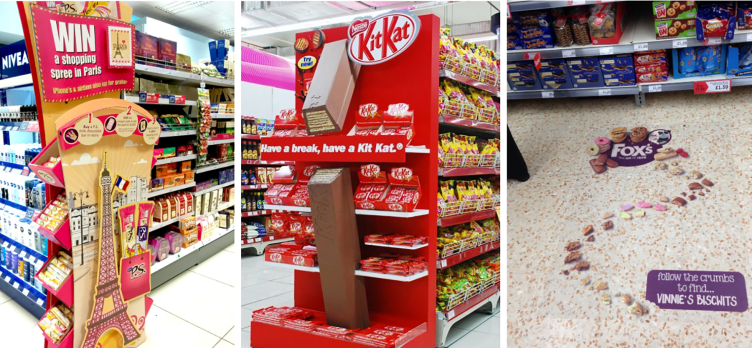In this developing market, where there is more competition and more platforms for reaching customers than ever before, shopper marketing is becoming a more effective and quantifiable strategy to generate sales.
Did you realize that shopper marketing has been here for quite some time? It is worth mentioning, however, that it has only lately been more defined, understood, polished, and highlighted, particularly in the retail business.
What is Shopper Marketing
Shopper marketing is the process of reaching out to your customers while they are on their way to making a purchase.
Shopper marketing comprises raising customer awareness and improving interaction with existing or new items.
It is a distinct discipline that focuses on enhancing and optimizing the consumer shopping experience in order to increase sales both in-store and online.
Shopper marketers differ from brand marketers, who are concerned with the bigger picture.
They are continually considering how customers travel through stores, are concerned with merchandising, and are increasingly considering digital strategies as well.
To reach a goal number, wide impressions across a national audience are insufficient.
Did you know that shopper marketing focuses on both the consumer and the place of purchase? It effectively persuades customers to purchase things depending on a variety of variables.
It’s also worth mentioning that the primary purpose of modern shopper marketing is to affect and favorably influence customers’ behavior and habits while they’re shopping. Brands do it in a way that promotes growth and consumption.

The Four Aspects of Shopper Marketing
The following key aspects must continue to be identified and integrated into shopper marketers’ marketing plans and KPIs.
1. Increase Sales
When it comes down to it, shopper marketing teams are judged on the amount of money they bring in through a certain business. They are the ones who are closest to the final buy. The value of a shopper is quantitative, quantifiable, and very apparent to both the manufacturer and the merchant when compared to other marketing initiatives. Yes, brand recognition is vital, but quantifying its influence is more complicated. Oreo’s Super Bowl commercial? People are still talking about it the next day. But how does it affect sales directly? Direct ROAS from brand initiatives causes an enormous amount of money, measurement, and intelligence.
Fundamentally, shopper teams are responsible for boosting sales of advertised goods at specific merchants both online and offline, making it one of the most complex marketing disciplines. In order to engage with customers and push them down the funnel, shopper insights must be the foundation for a comprehensive marketing approach that incorporates e-commerce, brand, and shopper insights.
2. Trial of a New Item
It’s more crucial than ever to ensure the success of a new launch in the increasingly competitive CPG industry, where new brands sprout up left and right and many customers are becoming more conscious of where they purchase.
In-store sample and couponing programs have typically been used to achieve driving trials, which is a fundamentally proactive and aggressive aim. While they are proven and effective ways, in-store sampling is basically off the table for the time being.
Recipes are one option. Recipes are the leading reason why buyers decide to try new goods, according to a Chicory poll performed in July 2020. Digital recipes in different formats, such as Pinterest postings, culinary blogs, or cooking videos, are a dependable approach to ensure that consumers try new items in the digital age of unlimited access.
3. Get Retailer Support on a Case-by-Case Basis
One of the most important shopper duties is to get the retailer’s approval for a planned campaign. It’s also one that’s difficult to quantify. One of the shopper marketer’s responsibilities is to maintain positive connections with store partners in order to acquire the support required for a certain execution.
To do so, shopper marketers must first comprehend the retailer’s objectives in order to create effective campaigns that lead to genuine partnerships and extra support. The value proposition must then be presented: how will the product fit the demands of the retailer’s customers, how will shopper behavior change as a result of the program, and how will sales be affected?
While shopper marketers are concerned with measures such as category share and new users, retailers are more concerned with total category growth and foot traffic — two very distinct metrics. Shopper marketers may be afforded more latitude and the opportunity to experiment with creative possibilities if they cultivate strong relationships with their store partners and create campaigns that benefit the retail customer.
4. Increase Your Category’s Share Of The Market
Shopper marketers are always battling for additional category share, not just with national brands, but also with challenger brands and private labels. Retailers frequently push their “own brands” to the top of e-commerce search results and give them first priority on shop shelves (unless a national brand pays for the preferred placement). Gaining category share becomes considerably more difficult as a result.
To increase revenue, shopper marketers need to gain a larger proportion of consumer preferences. To do so, they’ll need to collaborate with brand and e-commerce teams to create comprehensive, 360-degree plans that portray brand items as crucial to consumers.
Due to COVID-19 and meat production constraints, Impossible Foods, one of the most well-known challenger brands, gained national notoriety and had a significant increase in sales this year. The e-commerce team used this to create a direct-to-consumer website to sell mass packs, the brand team launched a successful weekly live chat project, and the shopper and retail marketing teams did A/B testing in-store at Kroger locations.
While Impossible Foods may not appeal to everyone, no one can dispute that they’ve carved themselves a market share in the plant-based industry, which is rapidly growing despite a slew of competitors. (From July to October, Impossible Foods’ market share allegedly climbed from 3% to 4.3 percent, while Beyond Meat’s market share fell from 24.5 percent to 21.4% over the same time period.)
Learn recent Shopper Marketing Trends here
Wrapping it up
It’s no secret that precise data will be used to influence and affect shopper marketing decisions in the future. One of the nicest things is that gathering and evaluating millions of retail data points, such as market intelligence, which may throw some light and give insights into shopper behavior, is easier and faster than in the past.




